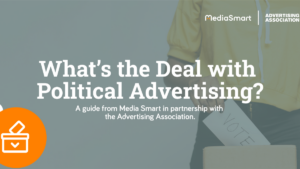By Alex Cheeseman, Head of Enterprise UK at Outbrain
The world isn’t woven with atoms, but rather stories spun with the delicate threads of human attention. Attention, that’s where the magic happens, not in fleeting moments. Yet, here we are, gripping onto outdated metrics as an industry. Shall we question why? Let’s unravel viewability.
Viewability: A Surface Glance at a Deeper Tale
Here’s a twist, a cruel one at that: Two ads, a mirror image in impressions and viewability rate, yet their impact? Chalk and cheese, my friend.
One sneaks in the shadows, while the other is a glorious blaze across your personal device.
Which is the victor in delivering the essence of brand advertising – mental availability?
The answer’s a clear one.
Our industry’s love affair with superficial metrics, though, is puzzling. Viewability measures how well your ad has an opportunity to be viewed; impressions give an idea as to how many people could have seen it. Yet, both fail to share if any level of attention has actually occurred, so can it be right to say both ads were impactful?
A New Age of Attention
Our world has become saturated with content, honing our minds into ad-dodging experts. Add poorly targeted and intrusive ads to the mix, and it’s a far cry from advertising as we’ve known it.
Those ads you’ve seen today, how many left an impression? A third at best, claims Dentsu Aegis Network. Adelaide, Amplified Attention, and Lumen, the sages of attention, peg it worse than Wanamaker’s optimistic 50% wastage.
Attention is no mere tool, it’s the soul of advertising. It’s the new rockstar, the shift from dwell time, active page time, and scroll depth. A journey towards the truth, the real connection, what users bring to the table.
Research has shattered the mirage that high viewability equals high attention. Adelaide’s findings show that media placements that have high ‘attention’ deliver stronger outcomes for brands in the shape of on-site purchase, offline sales, brand recall, brand favourability. In contrast, high viewability often marches hand-in-hand with low attention, low engagement, and thus, low outcomes.
The Symphony of Attention and Context
And then, the cookie crumbles. In this age of scrutiny and privacy, the interplay of attention and context becomes a nuanced performance. First-party data and contextual advertising take the lead, swinging purchase intent by 14% as per Integral Ad Science.
Ever seen Joshua Bell play unnoticed in a subway? It’s a heartbreaking show of context gone wrong.
That’s why it’s important to treat attention as a core success KPI, and use platforms (like Onyx by Outbrain™) which optimise for it. Early results are evidence of the synergy between attention and context, with Onyx surpassing attention unit benchmarks for display and rich media formats by 26%, and scoring higher than mobile banners by 53%.
Unlike viewability, attention metrics address more crucial inquiries such as the appropriate investment level, media performance, and the impact of the brand message on audience attention. Armed with these insights, marketers can make more confident decisions, fine-tune their media strategies to focus on more efficient attention sources, and achieve better brand outcomes as a result.
The Lasting Echo
First impressions might turn heads, but it’s the echo that lingers and makes an impact. Your mark, your echo, your bond – these are the stars of today. The world isn’t built on atoms, but thrives on stories, with attention that drives its pulse, and wisdom that fuels its growth.
It’s about time we paid attention, don’t you think?









